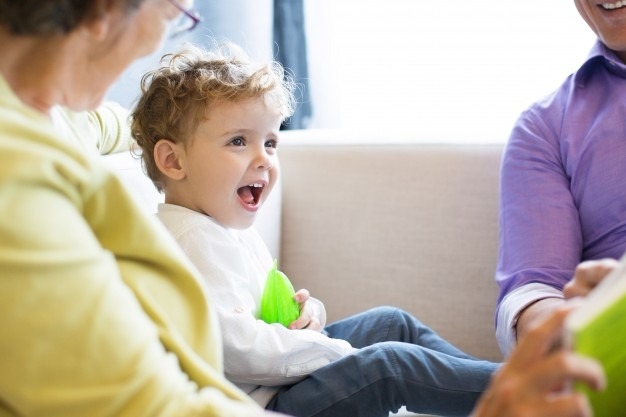
Practicing Mindfulness With Children
23 Jan 2018 | 3 min Read
Anamika Agnihotri
Author | 19 Articles
A week ago, I met an old friend, Kanika, over a cup of coffee. Among many things discussed, it came out that Kanika was quite worried about her 6-year-old daughter, Nishi, who complains of stomach aches and feeling sick every morning so that she could miss her school.
While there could be other aspects of this situation such as Nishi might be facing bullying at school or it might be a case of stress and anxiety accompanying full-time school with Nishi still finding it difficult to deal with it. Bullying is serious and it requires immediate action on the parents and the school’s part. However, it pays to strengthen the child’s mind to deal with stress and anxiety (may or may not be resulting from bullying) with practicing mindfulness.
Mindfulness means paying attention to the present moment. Trina Markusson, author of the children’s book, Good Morning, Sunshine! A Story of Mindfulness, says, “We have so many perfect moments we miss each day because we are stuck in thoughts that take us away from the present moment.”
The first step to help our children practice mindfulness is to practice it ourselves. Keeping a watch on our own thoughts to realise whether it is us, as parents, who are transmitting stress and anxiety to our children can be the starting point.
“Learning mindfulness isn’t like piano lessons, where you can have someone else teach it to your children,” said Susan Kaiser Greenland , a mindfulness instructor who works with children. “You have to learn it yourself.”
There are various ways to practice mindfulness along with your children –
- Keep your own distractions such as smartphones away or refrain from the tendency to check the notifications repeatedly when your children are around.
- Spend time doing activities that promote focus, creativity and inquiry — such as reading, making art and having conversations — rather than watching a lot of TV.
- Treat other people — especially your children — kindly, even when you are frustrated and upset. This one needs a lot of practice.
- Express gratitude for the things in your life you feel thankful for.
Mindfulness activities for the children –
- Belly breathing – Breathing exercises can help you become more familiar with the rhythms of your body. Something as simple as placing your child’s favourite stuffy on her stomach and having her breathe deeply to “rock it to sleep” can be an effective way to relax your child before bed and allow her to have a more restful night.
- Focussing on our five senses – Go out for quiet walks, stroll through the neighbourhood and notice things you haven’t seen before. Listen to the sounds you hear on the way— frogs, birds chirping, the sound of breeze. Eat meals without any noise in the background and using the sense of smell, touch and taste in the process.
- Expressing gratitude – Gratitude is a fundamental component of mindfulness. Teaching the children to appreciate the abundance in their lives, as opposed to focusing on all the toys and goodies that they crave.
- Make a Mind Jar. A mind jar is a bit like a snow globe – shake it up and watch the storm! But soon, if you sit and breathe and simply watch the disturbance, it settles. As do the minds.
Also read: You Are Your Child’s First Teacher
A


Related Topics for you
Suggestions offered by doctors on BabyChakra are of advisory nature i.e., for educational and informational purposes only. Content posted on, created for, or compiled by BabyChakra is not intended or designed to replace your doctor's independent judgment about any symptom, condition, or the appropriateness or risks of a procedure or treatment for a given person.
